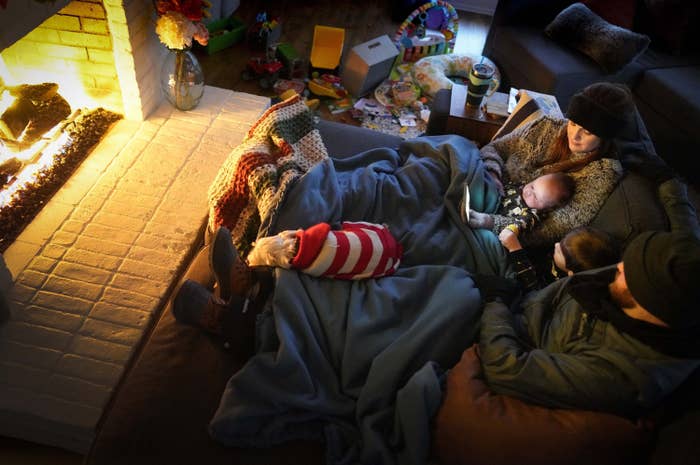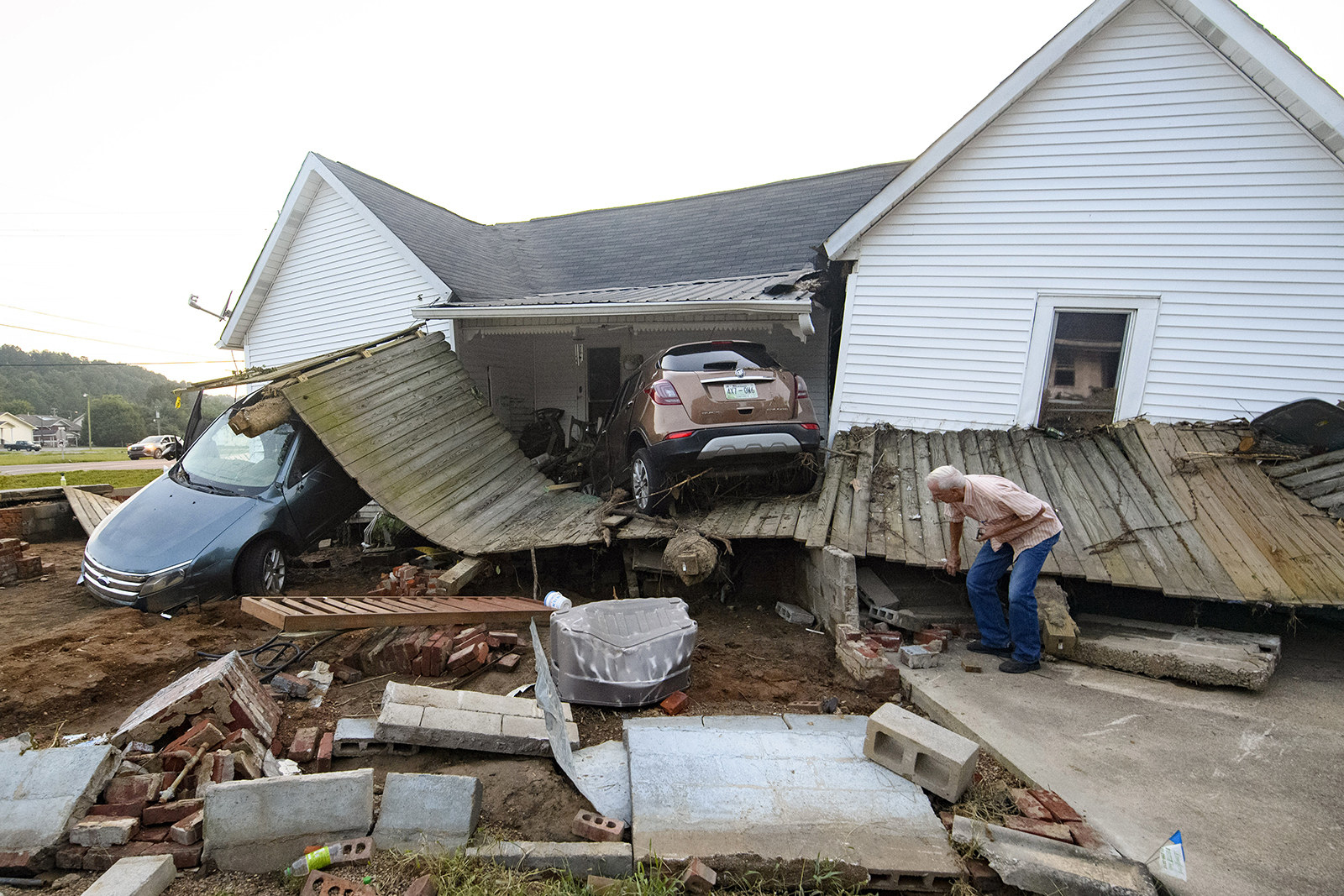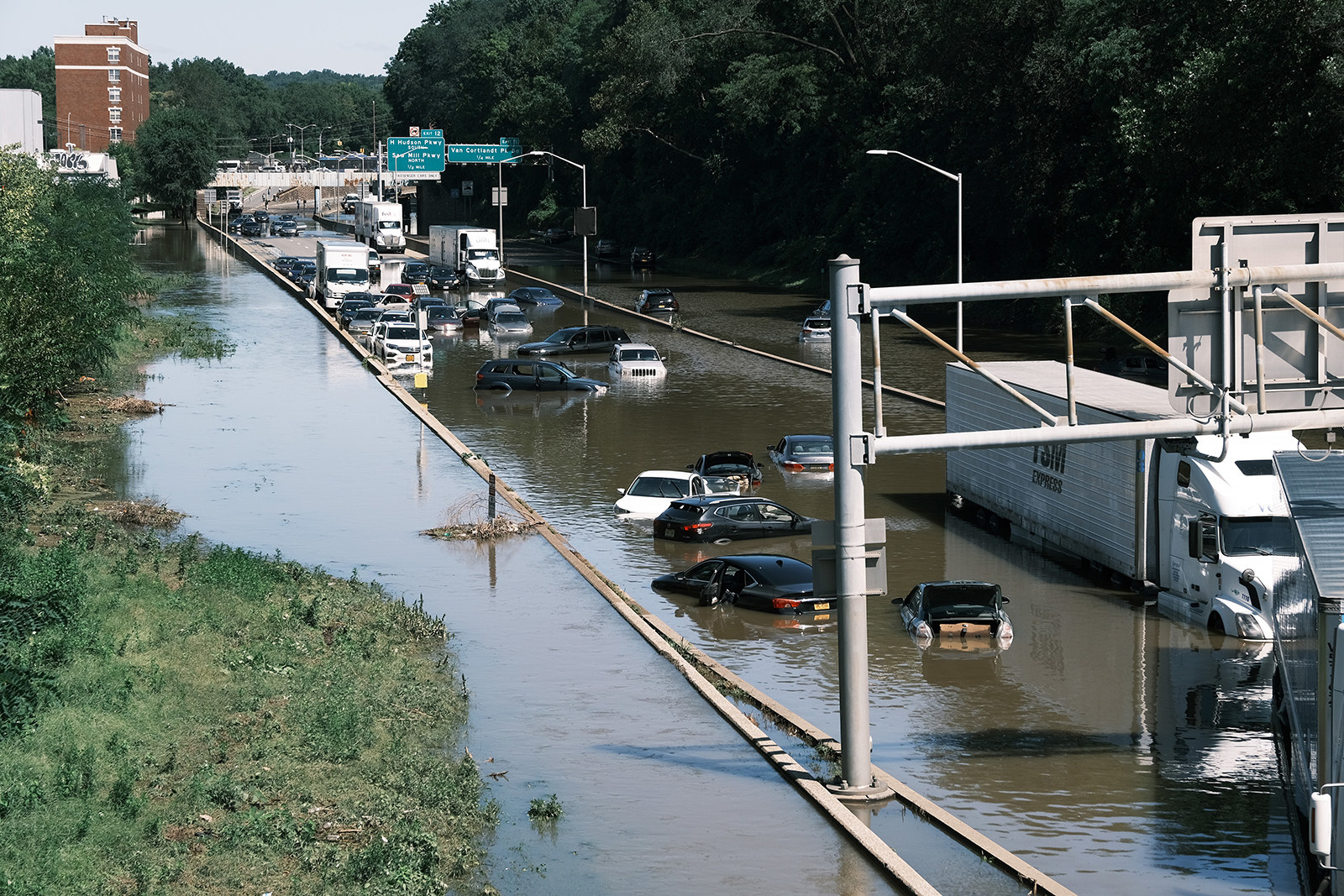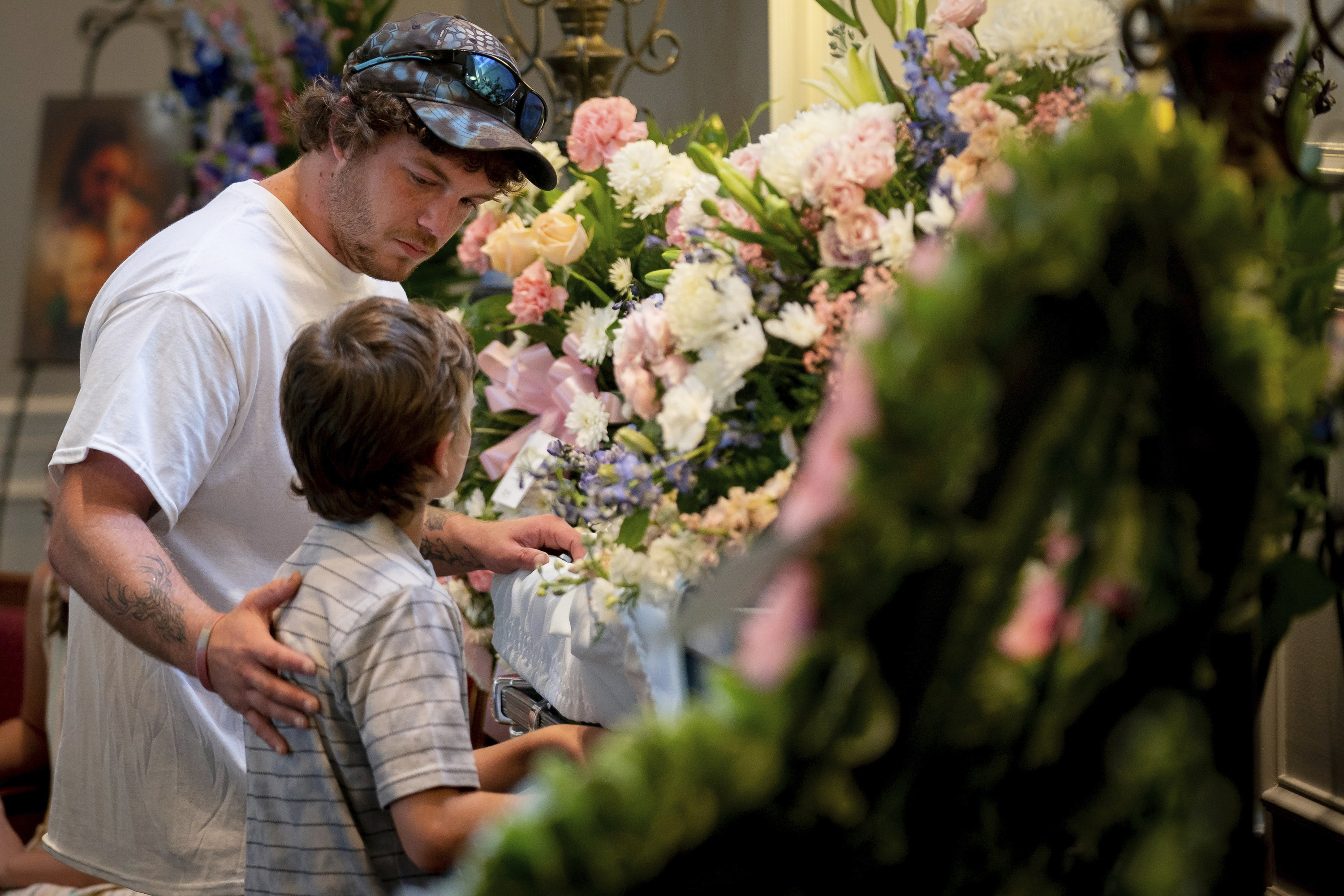No one is safe. That’s the disturbing lesson of 2021, a year when every corner of the US was pounded by deadly weather disasters.
A wicked winter storm descended on the middle of the country in February, bringing subfreezing temperatures to the typically temperate Texas, knocking out power and freezing people to death in their homes. In late June, people and animals were literally cooked to death in the Pacific Northwest, where temperatures shot up so high they rivaled those of California’s Death Valley. An August rainstorm unleashed so much water in a single day that a small Tennessee town turned into a raging river, knocking homes, with people still in them, right off their foundations. A late-summer catastrophic hurricane, wielding strong winds and heavy rains, battered communities from the Gulf Coast to the East Coast. And, most recently, a string of rare December tornadoes whipped through communities nationwide, pulverizing anything in their way.

“It was a really bad year,” said Michael Wehner, a senior scientist at Lawrence Berkeley National Laboratory in California. He added, “We said that last year, and the year before, and the year before that. We’ve had a whole lot of bad years in a row for extreme weather.”
This year’s devastation wasn’t just the result of random extreme weather. It was the kind of extreme weather that’s playing out in a world that has already warmed 2 degrees Fahrenheit (1.2 degrees Celsius) in the past century and a half, an irreversible result of people pumping carbon dioxide, methane, and other dangerous greenhouse gases into the atmosphere.
“This climate change stuff is already here,” Wehner continued. “The impacts are here. The sooner we accept that fact, the sooner we can start adapting our society to deal with it.”
It’s natural to wonder: Is it only climate change that is making every terrible disaster, well, so terrible and so deadly? The answer is not so straightforward. And, adding to the confusion, the US doesn’t accurately track climate and weather deaths.
For example, it’s still not well understood whether climate change is making tornadoes more likely to form and more intense. There’s more research to suggest that climate change is mucking with polar vortex patterns and worsening winter storms, like the one that slammed into Texas this year. Even that is still an open area of scientific debate.
But the summer of 2021 is a different story.
Climate change undoubtedly made the Pacific Northwest heat wave more extreme and deadlier than it would have been in a cooler world. The science is also robust linking rising temperatures to increasingly rainier events across the US — such as the Tennessee floods and Hurricane Ida — a result of a warmer atmosphere being able to hold more water vapor.
These record-setting disasters were not acting alone. They are coupled with government officials, at every level, being woefully unprepared. A lack of air-conditioning in the Pacific Northwest left people unable to cope with the unbearable heat. A combination of outdated flooding maps, overwhelmed sewers and drainage systems, and unprotected homes left people at risk of fast-moving water.
This double whammy has killed people.
Among the dead were children, parents, and grandparents. They were sick and they were healthy. Their skin colors were white, Black, and brown. They were homeless and they were in their homes. They were alone and they were with family and friends. They were sheltering in place and they were trying to flee. It’s impossible to pin any of these specific deaths to climate change, but they point toward a terrible trend: The climate crisis is already deadly. Here is a look at some of the stories of people who have died, and what their fates signal about the future.
Extreme heat

In the days before scorching temperatures arrived in the Pacific Northwest in late June, the National Weather Service kept updating its forecasts with increasingly dire predictions about exactly how hot it could get.
On Saturday, June 26, the Portland International Airport recorded 108 degrees, a new all-time high. Temperatures topped 100 degrees across Oregon and Washington that day.
Sebastian Francisco Perez, a 38-year-old Guatemalan immigrant who had only arrived in the US earlier in the year, collapsed while working outside at Ernst Nursery & Farms in St. Paul, Oregon. He died that day. At the time, Oregon lacked rules designed to specifically protect outdoor workers from the brutal heat.
Sunday was forecast to be hotter, and in many places it was: Seattle hit 104 degrees, Portland’s airport hit 112, and Salem hit 113. In Eugene, temperatures soared to a local record high of 111 degrees, forcing officials to postpone the US Olympic trials for track and field.
After enduring two scorching days in their home in northeast Salem without air-conditioning, Vickie Jones recalled thinking Monday, June 28, would be “a little bit cooler.” That’s what the early forecasts had predicted.
“It wasn’t. It was hotter yet,” Vickie told BuzzFeed News by phone. “We weren’t ready for that.”
That afternoon, Salem reached an all-time record high temperature: a staggering 117 degrees. Earlier in the week, Salem was roughly 30 degrees cooler.
Vickie was worrying about her husband of 44 years, Donald, who was napping upstairs in front of a fan. She sent her great-grandchildren to check on him.
“You need to come up and see Grandpa right now,” one of the kids yelled. “Something’s wrong.”
Vickie found her husband standing in front of the bed, slumped over and unconscious. “His skin was so hot, I could hardly touch him,” she told BuzzFeed News. “I think he got overheated, and it was too late for him to call out because his body started shutting down.” Donald died the next day at the hospital.
“He was only 67,” Vickie said. “He wasn’t ill or anything like that. That’s what is hard to grasp.”
Based on official reporting of deaths from the extreme heat that persisted for weeks after, this was among the nation’s deadliest heat waves in recent history. Oregon reported at least 96 deaths associated with the event. Washington state officials reported 119 deaths between June 26 and July 2, and an additional 38 heat-related deaths occurring through August.
The official numbers don’t tell the full story. The heat wave’s true death toll is likely hundreds higher. According to an excess death analysis conducted by BuzzFeed News, it’s likely that roughly 670 people were killed by the heat in Washington and Oregon in the week ending July 3.
Days after the heat wave was officially over, temperatures lingered above 90 degrees in Spokane, Washington. Mickey Hardin texted her ex-husband Charles “Chuck” Hardin, a former salesperson for Budweiser, wishing him a happy 4th of July. His reply was the last time she ever heard from him.

“The next-door neighbor saw the newspapers were piling up. The truck was in the driveway,” Mickey said. Charles was found on his kitchen floor, water bottle in hand. He had diabetes, meaning he was especially vulnerable to extreme heat. He didn’t have air-conditioning.
“It was a sad, sad situation,” Mickey said. “He will truly be missed.”
That same week, an international team of 27 scientists reported the results of a quick study deciphering how much climate change played a role in the record-shattering heat. They found the high temperatures were at least 150 times more likely because of the warming planet; without climate change, they concluded, the heat wave would have been “virtually impossible.”
“He went to sleep and just baked from the inside out.”
“We haven’t really felt how much we have changed the climate already,” said Friederike Otto, a climate scientist who contributed to the study. This event showed “what it means when your extremes become so much more extreme.”
When asked if climate change was to blame for the hundreds who had died during the heat wave, Otto responded: “We haven’t counted exactly how many of these people are the excess deaths because of climate change — but because climate change is playing such a big role, there are many.”
Shawn Cosgrove thinks his brother’s death may be one of them. Randall Cosgrove was a certified electrician and carpenter who did odd jobs across the region, Shawn said. Randy, as his family called him, drove to the site of a new job in Wilsonville, planning to sleep in his truck overnight so he could start first thing in the morning.
Instead, he died.
“That’s probably the hottest it’s ever been in Oregon,” Shawn told BuzzFeed News. He blamed climate change for what happened.
“I think it’s pretty obvious,” he said. “He went to sleep and just baked from the inside out.”
Extreme rain

On Aug. 21, 2021, before dawn, it started to rain in central Tennessee. The National Weather Service issued a flash flood emergency, its highest flood warning, around 9 a.m. A few hours later, the agency’s Nashville office tweeted: “This is a catastrophic flooding situation.” The small town of McEwen was hit by an astonishing 20.73 inches of rain that day, setting a new state record for 24-hour rainfall.
Waverly is a town over — and downhill — from McEwen. At some point during the downpour, debris washed into Trace Creek, which runs between the two towns, and obstructed its flow. Then, suddenly, a trestle bridge along the creek, which had been acting as a sort of levee, catastrophically gave away, officials told BuzzFeed News. Although Waverly only got 8 inches of rainfall that Saturday, in a matter of minutes the town went from being wet to being overrun with a mix of rain and runoff water.
Kim Kee was sitting on the couch drinking coffee with her husband, Mark, when he said, “Kim, there’s a noise.”
Kim got up and immediately identified the source: Water was pouring into the kitchen. She yelled at her mother to wake up and get dressed. Minutes later, the water was at their waists. Then she got hit from behind by a piece of furniture. She recalled the final moments in her house: “The refrigerator was sparking and falling over, the back door and front door blew in, and I was floating downstream.”
She floated several blocks before managing to grab on to a tree limb, holding on for about four hours before being rescued and taken to the hospital. “I was black and blue on every part of me,” she said. “On my right breast, my nipple was just hanging off.”

That night, while staying with relatives, Kim learned that her 79-year-old mother, who had also been washed away, was alive after holding on to a telephone pole and U-Haul truck hinge for hours. But her husband was still missing. Mark was a knife maker, a collector of rare Japanese blades, and Kim’s everything. “We had the marriage everyone would kill for,” she said. “We were best friends.”
The very next morning, Kim got a call to come back to the hospital. “He’s fine,” she recalled thinking. Then she saw the body bag.
Reflecting on what went wrong, Kim blamed local officials and a railroad company for not properly managing the waterways. She does not believe in climate change. “I don’t know what’s going to happen from here,” she said. “Do 20 deaths matter?”
While in his car, Jeremiah Shawl saw water topping over the road ahead of him. He used to be a first responder and immediately put that training into action. He went home to pick up a boat and set out to find his mother, Robin Shawl, and mother-in-law, Donna Bradley, both of whom had disabilities and lived in adjacent apartments.
“I pulled up to my mother and mother-in-law’s front doors with a boat,” he said, and he was “hollering in there to see if they were still in the apartments.”
But neither woman was there, and it's still not entirely clear what happened to them. He spent days searching. Their bodies were eventually found a few miles apart from each other.
When Shawl heard the news, he thought about his son and how devastating the deaths would be for him. “My mother was my little boy’s world,” he said. “He practically lived there.”
What happened in Waverly, he said, was “not natural.” He blamed much of the destruction on poor management of local waterways. “All the creeks are dried up. They are not cleaned up and not properly taken care of.”
But another probable factor is climate change, which scientists say is making this kind of deluge more likely.
“Because we know a warmer atmosphere has the capacity for greater water vapor availability, there’s just more water vapor available to these storms, whether they are rainstorms, hurricanes, perhaps even blizzards,” said James Marshall Shepherd, the director of the University of Georgia’s Atmospheric Sciences Program. “And so because of that, we see intense rainfall rates.” Waverly flooded in 2010 and at least once in 2019. This most recent incident was the most damaging and deadliest by far.
Extreme hurricanes

Just a week later, Hurricane Ida made landfall in Louisiana as a Category 4 storm on the anniversary of Hurricane Katrina. The storm’s fierce winds knocked out power for the entire city of New Orleans, and its strong rains washed out roads and homes. As Ida moved over land, its wind speeds plummeted and it was downgraded to a tropical depression. Still, the heavy rain continued more than 1,000 miles across the US, setting records and killing people up and down the East Coast.
“Three-plus inches of rainfall in an hour in New York City — that’s just unheard of,” Shepherd said. In an urban area like New York, all that rain is hitting impervious surfaces, from roads to sidewalks to parking lots, rather than seeping into soils, he explained, “and so you get rapidly rising waters in response.”
For the first time ever, the National Weather Service issued flash flood emergency alerts in New York and northeast New Jersey.
“The water is coming in right now,” Queens resident Choi Sledge told neighbors in a basement apartment over the phone on Sept. 1, according to an interview with the New York Times. The neighbors were unable to escape, though. Ang Lama, 50, his partner Mingma Sherpa, 48, and their 2-year-old son, Lobsang, all died in their home in Woodside, Queens. A total of 18 people died from the storm in New York, according to the state’s official tally. Many of them died in partially underground apartments that flooded.
“It was just too much water,” Robert Echavarria, fire chief in New Jersey’s town of Millburn, told BuzzFeed News.
Echavarria’s team rescued more than 100 people. No one died in Millburn, but other towns weren’t so lucky. In total, 33 people died from Ida in New Jersey, making it the state with the storm’s highest fatality count.
Shakia Garrett, 33, tried to help her neighbors as the waters started to rise around the Oakwood Plaza apartment complex in Elizabeth, New Jersey. The act of heroism proved fatal. Shakia died, as well as her neighbors: Jose Torres, 74, Rosa Espinal, 72, and their son Jose Torres, 38.
The apartments were close to the Elizabeth River, explained Salaam Ismial, a distant relative of Garrett’s and a local advocate helping the impacted families. “It was catastrophic,” Ismial said, adding that the apartment flooded with more than 8 feet of water within minutes.
Garrett and the Torres family tried to seek safety by climbing on top of a desk in the Torres apartment, he explained, but the water came too fast and too high. “Shakia was actually the last person to go,” Ismial said. She was on the phone with a Torres family member during the event, he explained. Suddenly the line went eerily silent. Shakia was gone.
Due to the widespread flood damage, the entire apartment complex, home to more than 600 people across hundreds of units, shuttered after the storm. Many of those families are still staying in hotels, motels, and shelters, Ismial said. “The government bureaucracy is failing to find permanent housing for these folks.”

The climate crisis will only get worse. So is 2022 destined to be just as destructive and deadly as 2021? It doesn’t have to be. Straightforward steps to increase preparation and shore up infrastructure could mitigate much of the damage. But political willpower, urgent action, and key investments are often sorely lacking.
That’s starting to shift in the places where the high stakes of climate change have already been made painfully clear.
For Oregon’s Multnomah County, which encompasses the city of Portland and was ground zero for more than half of the state’s heat-related deaths, local officials and scientists are determined to avoid so many deaths in future heat waves.
Going into last summer, Vivek Shandas, a Portland State University professor who studies how cities can adapt to climate change, had spent more than a decade sounding the alarm about the growing risk of extreme heat in the region. But he never got much traction with local officials or community groups. This year’s heat wave changed everything.
“I’ve somehow become the go-to heat researcher for the region,” Shandas told BuzzFeed News, who described being “underwater with requests” from members of the community and government in July and August to talk about heat risk.
Jessica Guernsey, the Multnomah County public health administrator, is one of the people now thinking a lot more about heat. “It was really devastating to know that this is going to be a norm,” she told BuzzFeed News, “and that we’re not we’re not fully positioned to [immediately] take care of every person in our community.”
Heat-related deaths are preventable, and the solutions are simple: ensuring people are hydrated and cool, ideally with air-conditioning. But since the region has historically never reached such high temperatures, many people didn’t have air-conditioning at home during the last heat wave. That was true for the Joneses, the Hardins, and even Guernsey.
If people aren’t able or willing to get air-conditioning at home, local officials can provide freely available “cooling centers.” The challenge is getting people there.
Guernsey and her colleagues did a detailed analysis of everyone who died from the heat in the county. The highest number of deaths were people who were living alone on higher floors of buildings with no air-conditioning.
“One of the things that really stands out in the event is the isolation,” she said, explaining that so many people died alone. Going into next summer, property managers and owners will need to communicate this risk to their tenants who fit in this category, and local officials will need to reach out to tenants as well. Or, as Guernsey puts it, “doubling and tripling communication.”
Likewise, both state and local officials in New Jersey told BuzzFeed News there’s now a greater awareness about climate change and flooding risks after Ida.
“I think it did change the conversation a bit,” said Shawn LaTourette, New Jersey’s environmental protection commissioner. “What hit New Jersey was the remnants of a tropical depression. So basically a really bad thunderstorm destroyed communities and literally washed people away.”
“You know what it takes?” he said. “It takes political courage.”
This means: “It wasn’t the worst of what we are going to see,” he said. As part of New Jersey Gov. Phil Murphy’s administration, LaTourette said, he’s devising new policies and programs that protect people from repeat and worsening flooding. This includes bolstering stormwater drainage in current and existing developments to incentivizing people to move out of harm’s way.
“You know what it takes?” he said. “It takes political courage.”
This fall, LaTourette spoke to the residents of Millburn, along with other places, about the state’s Blue Acres program, which offers property buyouts following devastating disasters. But it’s unclear if anyone will apply.
“It’s very tough for some of these homeowners,” said Jesse Moehlman, Millburn’s assistant business administrator. “They like the community. They like where they are sending kids to school. It’s weird and difficult to have a conversation around that. They want to live where they live.”
Moehlman, like LaTourette, is haunted by the idea of an even worse storm.
“In the neighboring Maplewood, there was a resident who died and was sucked into a manhole,” Moehlman said. “All I kept thinking was, as a community, this could have been much worse. More people could have lost their lives.”
In contrast, it’s hard to see how the flooding in Waverly, Tennessee, could have been any worse.
According to Chris Davis, sheriff of Humphreys County, who was born and raised in Waverly and helped respond to the disaster, some 600 homes were demolished, dozens and dozens of families have already moved away, and he expects it could take a decade for the region to fully recover.
“This was a massive, tragic event, nothing like we’ve ever seen,” Davis said.
After resisting for decades, Humphreys County finally signed up for the federal flood insurance program in September. This immediately made the county eligible for certain types of funding to help respond to the current disaster and prepare for a future one. This won’t change much in Waverly, though, which was already a part of the federal program. What could have a local impact, though, explained Waverly Mayor W.B. Frazier, is a new floodplain management study commissioned by the US Army Corps of Engineers. “As a result of that study, there’ll be some correction actions, plans, and projects to come out of that,” Frazier told BuzzFeed News.
Davis blamed much of the damage from the disaster on a dangerous pileup of debris that blocked a bridge until the water catastrophically poured out elsewhere. “I honestly do not feel like climate change had anything to do with it,” he said, later adding: “This was an act of Mother Nature.”
Frazier, a longtime Waverly resident, had a different diagnosis for what happened. “I am a firm believer that our climate is changing on us, and it looks to me, by these flooding events especially, that it's getting more severe.”
And since the August floods, he added, “I think there are more believers.” ●
